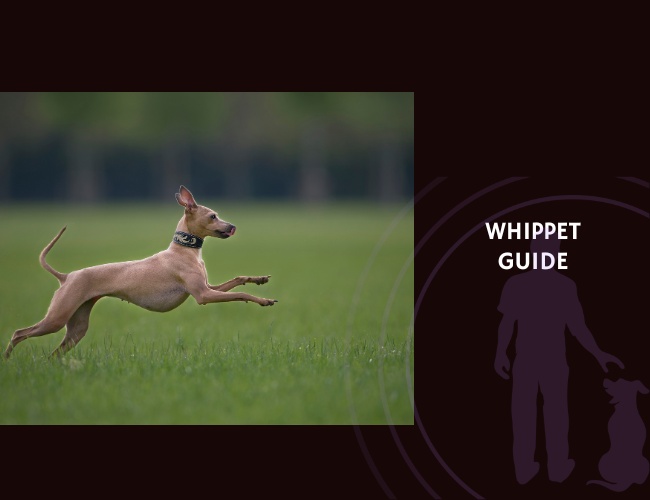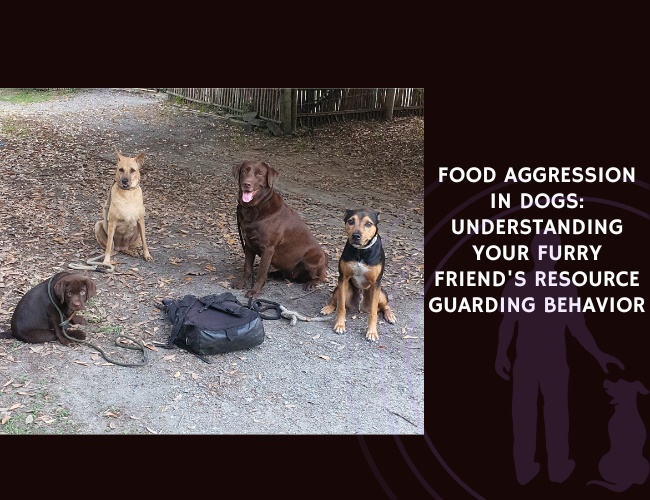Are you captivated by the graceful silhouette of a Whippet in motion? These elegant sighthounds, often called “the poor man’s racehorse,” represent one of the most fascinating contradictions in the canine world. One moment they’re streaking across a field at 35 mph, the next they’re curled up like a living sculpture on your favorite armchair. Let us guide you through the remarkable world of Whippets, where ancient hunting instincts meet modern companionship in perfect harmony.
Originally developed in Northern England during the 18th century, Whippets were bred by coal miners who wanted a dog that could hunt rabbits and participate in racing competitions. These “snap dogs” combined the speed of Greyhounds with a more manageable size, creating a breed that could excel in both sport and companionship. Today, your Whippet carries this rich heritage in every fiber of their being 🐾
Understanding the Whippet: A Breed Like No Other
The Whippet occupies a unique niche in the canine world, bridging the gap between high-performance athlete and devoted companion in ways that few breeds can match. These dogs challenge conventional wisdom about what it means to be a working breed, a family pet, or an athletic competitor—they excel at being all three simultaneously.
What makes Whippets truly remarkable is their ability to compartmentalize their lives with almost human-like sophistication. They understand when it’s time to work, when it’s time to play, and when it’s time to rest, switching between these modes with a grace that speaks to centuries of careful breeding. This behavioral flexibility, combined with their striking physical beauty and gentle temperament, has made them increasingly popular among dog enthusiasts who appreciate both form and function.
Character & Behaviour
The Paradox of Speed and Serenity
Understanding your Whippet’s behavior requires appreciating their unique position as both predator and companion. These dogs embody what behaviorists call “behavioral switching”—the ability to shift dramatically between high-energy pursuit mode and profound relaxation.
The Whippet’s behavioral profile is perhaps the most fascinating aspect of the breed, representing thousands of years of selective breeding that has created a living contradiction. One moment, your Whippet transforms into a laser-focused hunting machine, their entire nervous system dedicated to tracking and pursuing prey with single-minded intensity. The next, they’re curled up in your lap like a living sculpture, radiating serenity and contentment.
This behavioral duality stems from their evolutionary heritage as both working sighthounds and beloved companions. Unlike breeds developed for a single purpose, Whippets were bred to excel in high-performance situations while maintaining the gentle temperament necessary for close human companionship. Their neurological architecture reflects this dual purpose—they possess the heightened sensory processing of a specialist predator combined with the emotional intelligence of a devoted companion animal.
Modern Whippets retain these ancient behavioral patterns, which means understanding their character requires recognizing when they’re operating in “hunt mode” versus “companion mode.” This switching isn’t arbitrary—it’s triggered by specific environmental cues and internal states that every Whippet owner should learn to recognize and respect.
Prey Drive and Visual Motion Sensitivity
Your Whippet’s eyes are evolutionary marvels, designed to detect the slightest movement across vast distances. This visual acuity means that squirrels, cats, and even rustling leaves can trigger an immediate chase response. The neurobiological basis of this behavior lies in their enlarged visual cortex and heightened motion-detection pathways.
You might notice your Whippet becoming completely fixated on movement outside the window, their body tensing like a coiled spring. This isn’t stubbornness—it’s millions of years of evolution expressing itself through modern DNA. Understanding this helps you manage their environment more effectively, using visual barriers when needed and providing controlled outlets for their chase instincts.
Social Attachment and Human Bonding Style
Whippets form remarkably deep emotional bonds with their human families, often displaying what researchers term “velcro dog” behavior. Unlike some breeds that remain somewhat aloof, Whippets seek constant physical contact and emotional connection. This stems from their breeding history as both working dogs and companions.
Your Whippet’s attachment style tends toward secure dependency—they’re confident when you’re present but may experience genuine distress during separation. This isn’t neediness; it’s an evolutionary adaptation that served them well when working closely with handlers. You’ll find they often position themselves where they can maintain visual contact with you, even during rest periods.
Fear Sensitivity and Environmental Reactivity
Despite their athletic prowess, Whippets often display surprising sensitivity to environmental stressors. Their thin skin and minimal body fat make them physically sensitive to temperature changes, but their emotional sensitivity runs deeper. Many Whippets show heightened startle responses and may need extra time to adjust to new environments.
This sensitivity isn’t a flaw—it’s part of their refined nature. Their stress responses tend to be more subtle than those of more reactive breeds, often manifesting as withdrawal rather than aggression. You might notice your Whippet becoming very still and watchful when uncertain, rather than displaying obvious anxiety behaviors.
Inter-Dog Social Dynamics and Play Styles
Whippets typically engage in what ethologists call “chase-based play,” mirroring their hunting heritage. Unlike breeds that prefer wrestling or tug-of-war, Whippets excel at games involving running, dodging, and pursuit. Their play style is often graceful and flowing, resembling a choreographed dance more than rough-and-tumble interaction.
With other dogs, Whippets generally prefer playmates who can match their speed and play style. They may seem less interested in heavy-bodied breeds that can’t keep up with their agility, instead gravitating toward other sighthounds or similarly athletic breeds. This preference isn’t snobbery—it’s practical compatibility.
Emotional Regulation and Rest Behaviour
Perhaps no breed demonstrates the importance of recovery time like the Whippet. These dogs require extensive rest periods to process experiences and regulate their emotional state. You’ll discover that a well-rested Whippet is a well-behaved Whippet, while an overtired one may become reactive or withdrawn.
Their rest behavior is remarkably sophisticated—they seek out specific textures, temperatures, and positions that optimize their comfort. Many Whippets develop elaborate nesting behaviors, arranging blankets and cushions with surprising precision. This isn’t mere comfort-seeking; it’s a form of self-care that supports their emotional well-being 🧡

Training & Education
Working with the Whippet Mind
Training a Whippet requires understanding their unique cognitive profile. These dogs are intelligent but not in the way a Border Collie is intelligent. They’re specialists rather than generalists, with profound expertise in specific areas.
The Whippet mind operates on principles that can seem contradictory to those familiar with more conventional breeds. These dogs possess remarkable intelligence, but it’s channeled through the lens of their evolutionary specialization as sight-based hunters. Where a herding breed might excel at complex, multi-step tasks involving precise control and endless repetition, Whippets demonstrate their intelligence through lightning-fast decision-making, environmental awareness, and an almost supernatural ability to read subtle cues.
This cognitive specialization means that traditional training methods often fail with Whippets—not because they’re stubborn or unintelligent, but because their minds are wired for different types of learning. They excel at associative learning, pattern recognition, and intuitive understanding of human emotions, but may struggle with highly structured, repetitive exercises that don’t engage their natural cognitive strengths.
Successful Whippet training requires patience, creativity, and a willingness to work with the dog’s natural inclinations rather than against them. These dogs respond beautifully to training that feels like play, that incorporates movement and variety, and that respects their sensitive nature. The key is understanding that you’re not just teaching behaviors—you’re building a communication system with a highly intelligent but uniquely wired canine mind.
Learning Style and Reinforcement Preference
Whippets respond best to positive reinforcement training methods that respect their sensitive nature. Harsh corrections or punishment-based training often backfires with this breed, creating anxiety rather than compliance. Instead, they thrive on gentle guidance and clear, consistent communication.
Your Whippet’s learning style tends toward what behaviorists call “intuitive learning”—they excel at reading subtle environmental cues and human body language. This means they often understand what you want before you fully communicate it, but they may struggle with highly structured, repetitive training exercises that don’t engage their natural intelligence.
Recall Reliability and Distraction Thresholds
The Whippet recall challenge is legendary among sighthound enthusiasts. When your Whippet spots prey, their brain essentially “goes offline” to everything except the chase. This isn’t disobedience—it’s a neurological response so hardwired that it overrides conscious thought.
Building reliable recall requires understanding these distraction thresholds and working systematically to expand your Whippet’s ability to respond even when stimulated. Start with low-distraction environments and gradually increase complexity, always ensuring that coming to you is the most rewarding option available.
Problem-Solving Capacity and Cognitive Flexibility
Whippets possess remarkable problem-solving abilities within their areas of expertise. They can calculate complex pursuit trajectories, anticipate prey movements, and adapt their hunting strategies in real-time. However, they may seem less capable when faced with problems outside their evolutionary wheelhouse.
This cognitive specialization means your Whippet might appear brilliant in some contexts and seemingly dense in others. They’re not inconsistent—they’re highly focused on specific types of challenges. Effective training leverages their natural problem-solving tendencies while building skills in areas where they’re less intuitive.
Training Session Structure and Attention Span
Whippets typically have focused but brief attention spans for formal training. Sessions of 5-10 minutes work better than lengthy drilling exercises. They learn best when training feels like play or when it connects to their natural behaviors.
Structure your training sessions to include movement and variety. Static sit-stay exercises bore most Whippets, while training games that involve running, jumping, or chasing tend to maintain their engagement. Remember that mental stimulation can be as tiring as physical exercise for these thoughtful dogs.
Handler Synchrony and Social Learning
Whippets are remarkably attuned to human emotions and energy levels. They often mirror their handler’s state, becoming excited when you’re energetic and calm when you’re relaxed. This emotional synchrony makes them excellent therapy dogs but also means they’re affected by household stress.
Your Whippet learns as much from observing your behavior as from direct instruction. They’re particularly skilled at reading micro-expressions and body language, often responding to cues you didn’t realize you were giving. This makes consistent, calm training approaches especially important with this breed.
Fast. Fragile. Faithful.
A blur on the field, a statue on your couch.
The Whippet lives in duality—explosive power and delicate stillness. Born of the racecourse and raised for the hearth, this breed doesn’t just run; it disappears. And when the sprint ends, they melt into your lap, seeking the warmth of your presence.
Not built for the cold, but wired for connection.
With skin like silk and hearts like velvet, Whippets bond in whispers, not demands. They don’t bark for attention—they breathe it in your direction. But miss their cues, leave them alone too long, or ask them to be something they’re not, and you’ll watch them fade into stillness, not out of obedience, but out of quiet dismay.
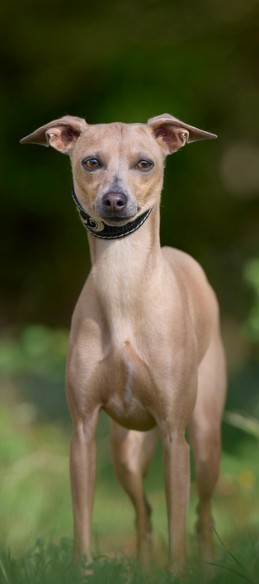
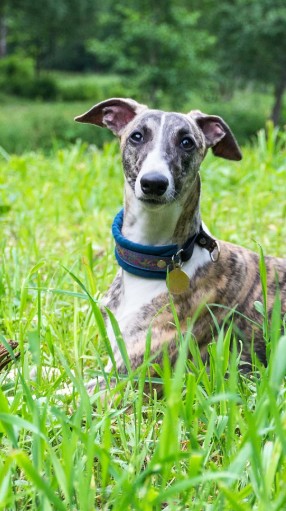
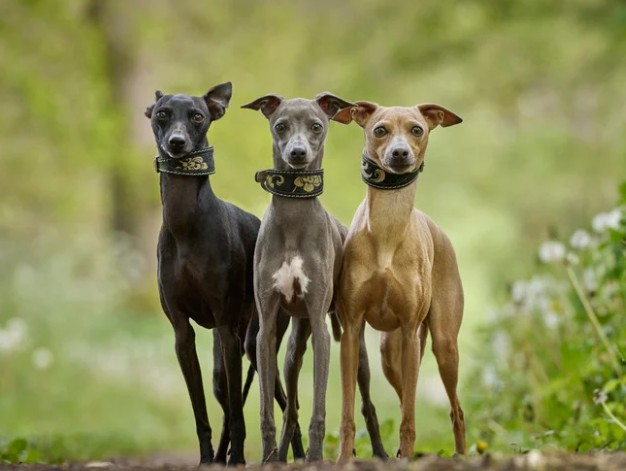
You don’t own a Whippet. You listen to one.
Their training is trust. Their recall is a dance with instinct. Their love is subtle, shaped by shared silences and mutual grace. When you understand their rhythm, they give you everything—speed, stillness, and the deepest kind of loyalty. 🧡
Nutritional Recommendations
Fueling the Sprinter’s Body
Whippets have unique nutritional needs that reflect their dual nature as both sprinters and couch potatoes. Their metabolism and body composition require careful consideration when developing feeding strategies.
The Whippet’s nutritional requirements present a fascinating study in evolutionary adaptation. These dogs carry virtually no excess body fat—typically only 5-10% compared to 15-20% in most breeds—which profoundly affects their metabolism, temperature regulation, and nutritional needs. Their muscle composition is dominated by fast-twitch fibers designed for explosive speed rather than endurance, creating specific demands for protein quality and recovery nutrition.
Unlike breeds built for sustained activity, Whippets experience dramatic fluctuations in energy expenditure. They might burn enormous calories during a brief sprint session, then spend the next 22 hours in near-hibernation mode. This “feast or famine” activity pattern means their nutritional needs vary significantly based on activity level, season, and individual metabolism.
Their refined digestive systems often reflect generations of selective breeding for performance rather than robustness. Many Whippets develop food sensitivities or digestive issues that require careful dietary management. Additionally, their minimal coat and exposed skin create unique nutritional demands for maintaining healthy skin barrier function and temperature regulation.
Understanding these factors allows you to develop a feeding strategy that supports your Whippet’s athletic performance while maintaining their elegant physique and supporting their overall health throughout all life stages.
Energy Requirements for Sprint-Based Performance
Unlike endurance athletes, Whippets are built for short bursts of intense activity followed by long periods of rest. Their energy requirements vary dramatically based on activity level, age, and individual metabolism. A racing Whippet needs significantly more calories than a pet Whippet, but both require high-quality nutrition to support their lean muscle mass.
Most adult Whippets thrive on 25-30 calories per pound of body weight daily, but active dogs may need 35-40 calories per pound. The key is monitoring body condition rather than following rigid feeding guidelines. You should be able to feel your Whippet’s ribs easily but not see them prominently.
Lean Mass Maintenance and Muscle Recovery
Whippets carry minimal body fat, making protein quality crucial for maintaining their athletic physique. They require higher protein percentages than many breeds—typically 25-30% of their diet should come from high-quality protein sources.
Post-exercise nutrition is particularly important for Whippets who engage in intense activity. A small meal containing easily digestible protein and carbohydrates within 30 minutes of exercise helps optimize recovery. Many Whippet owners find that splitting daily food into 2-3 smaller meals supports better digestion and energy levels.
Digestive Health and Feeding Sensitivities
Whippets often have sensitive digestive systems, possibly due to their refined breeding and thin body structure. Common sensitivities include grain intolerance, protein allergies, and reactions to artificial additives. Many Whippets do well on limited ingredient diets that eliminate potential triggers.
Feeding from elevated bowls can help prevent digestive issues, as can maintaining consistent meal times. Some Whippets are prone to eating too quickly, which can lead to digestive upset. Puzzle feeders or slow-feeding bowls can help moderate their eating pace.
Coat and Skin Nutrition for Short-Haired Breeds
Despite their minimal coat, Whippets require specific nutrients to maintain healthy skin. Their exposed skin is vulnerable to environmental damage, making omega-3 fatty acids particularly important. These nutrients support skin barrier function and reduce inflammation.
Whippets often benefit from supplements containing fish oil, vitamin E, and zinc. However, their thin skin means they’re also more susceptible to nutrient imbalances, so supplementation should be done carefully and preferably under veterinary guidance.
Thermoregulatory Support via Nutritional Additives
Whippets’ minimal body fat and thin coat make temperature regulation challenging. Certain nutrients can support their thermoregulatory function, particularly during extreme weather conditions. B-vitamins support metabolic function, while iron helps with circulation.
During cold weather, slightly increasing caloric intake helps support heat generation. Conversely, during hot weather, ensuring adequate hydration becomes crucial. Some Whippets benefit from electrolyte supplements during intense summer activity.

Diseases & Susceptibilities
Protecting Your Whippet’s Health
Like all purebred dogs, Whippets have specific health considerations that responsible owners should understand. Many of these conditions are manageable with proper care and early detection.
The Whippet’s health profile reflects both the benefits and challenges of their refined breeding. On the positive side, their lean build and active lifestyle contribute to lower rates of many common canine health issues like hip dysplasia and obesity-related conditions. However, their specialized anatomy and genetics create vulnerabilities that require informed management.
Their cardiovascular system, optimized for sprint performance, can develop specific conditions as they age. Their minimal body fat and thin skin make them more susceptible to temperature-related stress and certain skin conditions. Their refined nervous system, while contributing to their athletic abilities, can also make them more sensitive to anesthesia and certain medications.
Many Whippet health issues have genetic components, making responsible breeding practices crucial for the breed’s long-term health. Reputable breeders conduct extensive health testing, but even dogs from excellent bloodlines can develop conditions as they age. The key to maintaining your Whippet’s health lies in understanding their specific vulnerabilities, maintaining regular veterinary care, and recognizing early warning signs.
Early detection and proper management can significantly improve outcomes for most Whippet health conditions. Many affected dogs continue to live full, active lives with appropriate care modifications and veterinary support.
Heart Health and Mitral Valve Disease (MVD)
Mitral valve disease is one of the more serious conditions affecting Whippets, particularly as they age. This condition involves the deterioration of the heart valve that separates the left atrium from the left ventricle, leading to reduced cardiac efficiency.
Early signs of MVD include exercise intolerance, coughing (especially at night), and reduced enthusiasm for activity. Regular cardiac screening, including echocardiograms, can detect MVD before symptoms appear. While there’s no cure, early detection allows for management strategies that can significantly extend quality of life.
Autoimmune-Linked Alopecia and Skin Disorders
Whippets can develop various autoimmune skin conditions, including alopecia areata (patchy hair loss) and more generalized skin sensitivities. These conditions often have genetic components but can be triggered by stress, environmental factors, or dietary sensitivities.
Treatment typically involves identifying and eliminating triggers while supporting the immune system through nutrition and sometimes medication. Many skin conditions in Whippets respond well to gentle, hypoallergenic grooming products and dietary modifications.
Orthopaedic Injuries and Performance Strain
Despite their athletic nature, Whippets are prone to certain orthopaedic injuries, particularly those affecting the muscles and tendons. Their explosive acceleration and sudden stops can strain soft tissues, especially in older dogs or those who exercise irregularly.
Common injuries include muscle pulls, tendon strains, and occasionally fractures. Prevention involves proper warm-up and cool-down routines, maintaining good fitness levels, and providing adequate recovery time between intense activities. Regular veterinary check-ups can identify potential issues before they become serious.
Deafness and Ocular Health in Light-Coloured Lines
Some Whippet lines, particularly those with extensive white markings, may be more prone to congenital deafness. This condition is linked to the same genetic factors that produce white coat color and can affect one or both ears.
Eye conditions, while less common, can include progressive retinal atrophy and corneal dystrophy. Regular eye examinations by a veterinary ophthalmologist can detect these conditions early. Many affected dogs live normal lives with appropriate accommodations.
Anesthesia Sensitivity and Metabolic Rates
Whippets and other sighthounds have unique responses to anesthesia due to their low body fat and altered drug metabolism. They typically require lower doses of anesthetic agents and may take longer to recover from procedures.
Always inform your veterinarian that your dog is a Whippet before any procedure requiring sedation or anesthesia. Experienced veterinarians will adjust protocols accordingly and monitor recovery more closely. This sensitivity also extends to some medications, making proper dosing crucial.
Attitude & Lifestyle
Living with Your Whippet
Whippets adapt remarkably well to various lifestyles, but they thrive best when their specific needs are understood and accommodated. They’re often called “40-mile-per-hour couch potatoes” for good reason.
Living with a Whippet means embracing a lifestyle that accommodates both their athletic capabilities and their profound need for comfort and companionship. These dogs challenge many assumptions about what it means to be “high-energy” or “low-maintenance.” They can be both, depending on the context and your understanding of their unique requirements.
The Whippet lifestyle philosophy centers around quality over quantity—they prefer intense, focused activities followed by extended periods of luxurious relaxation. This isn’t laziness; it’s an evolutionary adaptation that maximizes efficiency while conserving energy. In the wild, their ancestors needed to maintain peak condition for brief, crucial hunting moments while spending most of their time at rest.
Modern Whippets retain this pattern, which means successful ownership requires understanding when to encourage activity and when to respect their need for rest. They’re incredibly adaptable to various living situations, from urban apartments to rural estates, but they require owners who can provide appropriate outlets for their physical and emotional needs.
Perhaps most importantly, Whippets are relationship-oriented dogs who view their human families as their primary source of security and purpose. They’re not independent dogs who can thrive with minimal interaction—they need to feel integrated into the family unit to achieve their full potential as companions.
Home Environment Preferences and Resting Needs
Your Whippet’s ideal home environment prioritizes comfort and warmth. These dogs seek out the softest surfaces and warmest spots in your house, often claiming furniture as their personal territory. This isn’t spoiled behavior—it’s a practical adaptation to their thin skin and minimal body fat.
Most Whippets prefer homes with soft furnishings, warm bedding, and protection from drafts. They often develop strong preferences for specific resting spots and may become stressed if their favorite areas aren’t available. Creating multiple comfortable resting areas throughout your home helps accommodate their need for various comfortable positions.
Exercise Requirements and Mental Enrichment
Whippets need regular opportunities for intense exercise but don’t require the constant activity that some breeds demand. A typical adult Whippet thrives on 30-60 minutes of daily exercise, but this should include opportunities for free running in secure areas.
Mental enrichment is equally important. Whippets enjoy puzzle toys, scent work, and activities that engage their natural hunting instincts. Many excel at lure coursing, which satisfies their chase drive in a controlled environment. Without adequate mental stimulation, they may become destructive or develop behavioral issues.
Urban vs Rural Adaptability
Whippets can adapt to both urban and rural environments, but each presents unique challenges. Urban Whippets need secure areas for off-leash exercise, as their prey drive makes them unsuitable for off-leash walks in areas with traffic. Many city Whippets thrive with regular trips to fenced dog parks or participation in organized lure coursing events.
Rural Whippets often have more opportunities for natural exercise but may face different challenges, such as livestock or wildlife that trigger their chase instincts. Proper fencing becomes crucial in rural settings, as Whippets can easily clear four-foot fences when motivated.
Interaction with Children and Household Members
Whippets generally make excellent family dogs, particularly with children who understand their gentle nature. They’re typically patient and tolerant but may be overwhelmed by very young children who are loud or rough. Their thin skin makes them more vulnerable to accidental injury during play.
These dogs often form strongest bonds with family members who respect their need for quiet time and gentle handling. They’re sensitive to household tension and may become stressed in chaotic environments. Consistent, calm interactions help them feel secure and confident.
Ageing and Senior Mobility Considerations
Senior Whippets often maintain their elegant appearance well into their golden years, but they develop specific needs as they age. Arthritis and muscle loss can affect their mobility, while their already minimal body fat may decrease further.
Older Whippets benefit from softer bedding, easier access to favorite resting spots, and modified exercise routines that maintain fitness without causing strain. Many seniors appreciate ramps or steps to help them access furniture safely. Regular veterinary care becomes even more important to monitor for age-related conditions and adjust care accordingly.
Conclusion: Is the Whippet Right for You?
The Whippet represents a unique opportunity to share your life with a breed that embodies both athletic excellence and profound companionship. These dogs offer an unusual combination of independence and attachment, athleticism and gentleness, that appeals to many different types of dog lovers.
Consider a Whippet if you:
- Appreciate a dog that can match your energy when active but won’t demand constant attention
- Have access to secure areas where your dog can run safely off-leash
- Enjoy a gentle, sensitive companion who forms deep emotional bonds
- Can provide warm, comfortable living conditions and don’t mind sharing your furniture
- Want a relatively low-maintenance breed that doesn’t require extensive grooming
A Whippet might not be ideal if you:
- Need a dog that can be trusted off-leash in unsecured areas
- Want a breed that’s naturally protective or makes an effective guard dog
- Live in an environment where you can’t accommodate their temperature sensitivity
- Prefer dogs that are highly trainable for complex obedience work
- Are looking for a very robust, “tough” dog that can handle rough play
The decision to welcome a Whippet into your life shouldn’t be taken lightly, but for the right person or family, these remarkable dogs offer a relationship of rare depth and mutual enrichment. They ask for little—comfort, understanding, and the occasional opportunity to run like the wind—but give back immeasurable grace, loyalty, and love.
If you’re ready to share your couch with a 40-mile-per-hour snuggle expert, the Whippet might just be the perfect addition to your family 🧡

